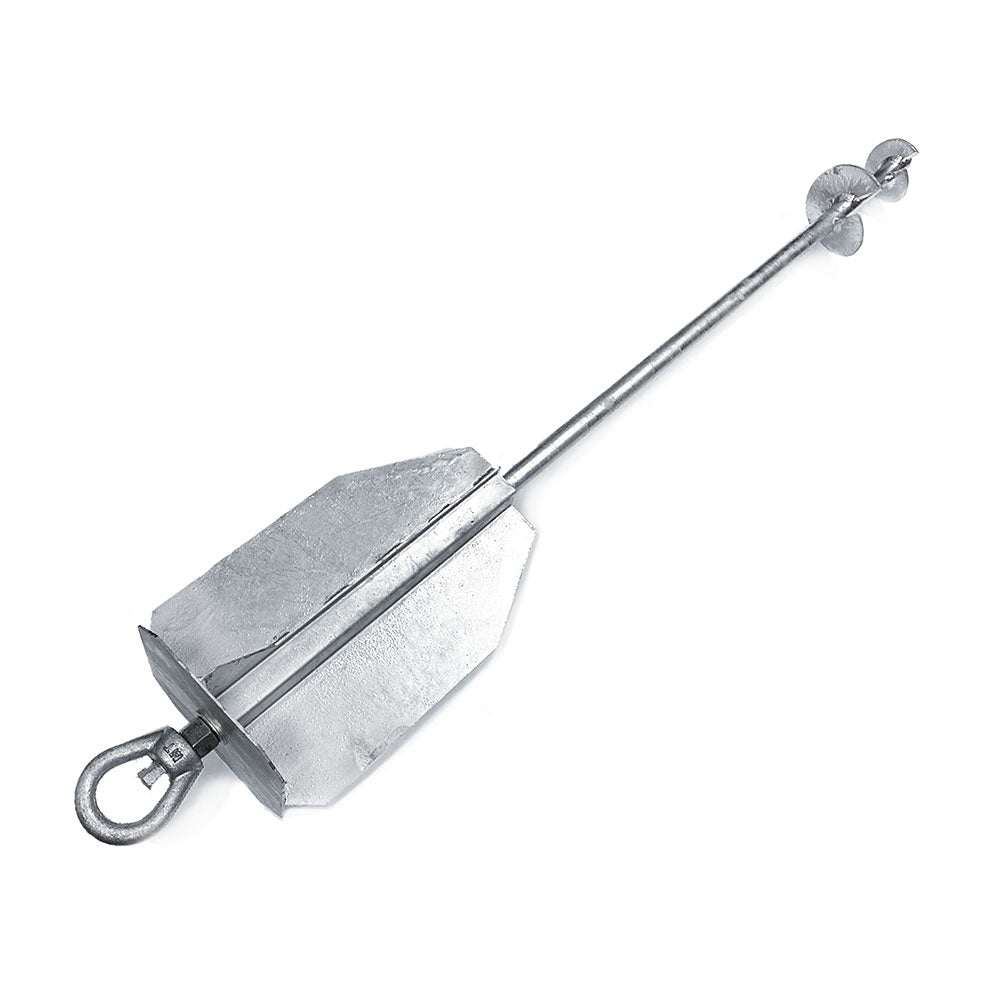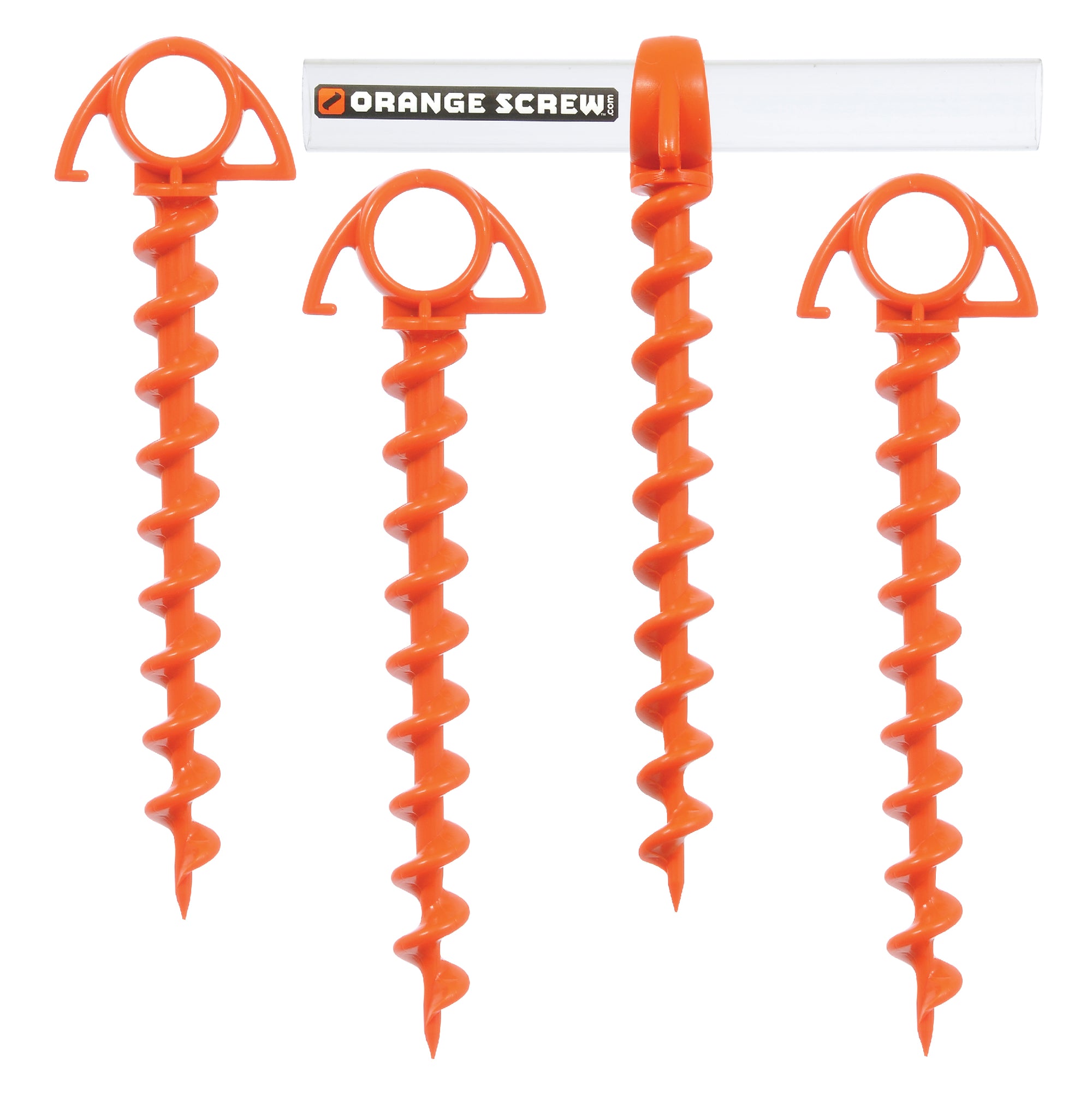The Best Ways to Install a Ground Anchor for Better Stability
The Best Ways to Install a Ground Anchor for Better Stability
Blog Article
Check Out the Different Kinds of Ground Support for Your Next Task
From auger anchors, which succeed in varied soil problems, to risk supports made for short-lived installations, the options are numerous. Furthermore, concrete and screw supports present one-of-a-kind benefits in details situations, while deadman supports are tailored for applications calling for resistance to lateral pressures.

Auger Anchors
Auger anchors are a preferred option in numerous building and construction and landscaping tasks due to their special style and efficient anchoring abilities. These supports are composed of a helical screw-like shaft that is driven right into the ground, permitting for a steady and safe and secure hold. The spiral design facilitates simple installation and makes best use of resistance versus lateral forces, making auger anchors especially reliable in applications such as fence, short-lived frameworks, and erosion control.
The installation process of auger supports is fairly simple. Auger supports can be conveniently eliminated and reused, which includes to their cost-effectiveness and sustainability.
Among the substantial advantages of auger supports is their ability to disperse loads equally throughout the surrounding soil, lowering the risk of dirt disturbance and reducing environmental influence. In addition, they are much less susceptible to heaving or loosening up gradually compared to standard anchoring techniques. Auger supports are an excellent option for jobs calling for dependable and sturdy anchoring solutions.

Stake Anchors
When it concerns protecting structures in a range of outdoor applications, stake supports provide a straightforward and dependable service. These anchors are commonly created from durable materials such as steel or aluminum, made to endure ecological stresses while providing optimum security. Their straightforward layout enables fast installation, making them an optimal option for permanent or temporary anchoring needs.
Risk supports are especially useful in securing tents, covers, and other lightweight frameworks versus wind and climate. They function by being driven right into the ground at an angle, creating a strong hold that stands up to pull-out pressures - Ground Anchor. The effectiveness of risk supports relies on numerous aspects, including dirt type, moisture material, and the angle of installation
For included safety and security, several risk anchors come with attachment factors for ropes or straps, permitting tension adjustments as needed. In applications such as landscaping or building and construction, they can properly maintain tools or frameworks on irregular surface. In general, risk anchors offer a economical and flexible service for protecting numerous outside installations, making them a preferred choice for contractors and DIY fanatics alike.
Concrete Anchors
Concrete anchors supply a durable solution for protecting frameworks to concrete surface areas, guaranteeing stability and safety in different applications. These supports are vital for jobs ranging from household buildings to large-scale commercial installations. They come in different types, consisting of growth anchors, adhesive supports, and undercut supports, each created for details lots needs and ecological problems.
When installed,Expansion supports rely on mechanical systems to grasp the concrete. They are optimal for medium to heavy-duty applications. Glue supports use high-strength epoxy or resin to bond the anchor to the concrete, offering remarkable load-bearing capacities, particularly in fractured concrete situations. Undercut anchors develop an unique shape within the concrete, providing extraordinary holding power, specifically in applications where tensile tons prevail.
When performed appropriately, concrete anchors significantly improve the structural honesty of various projects, making them important in contemporary building and construction methods. Recognizing the specific needs of your task will assist in selecting the ideal kind of concrete support for the job.
Screw Anchors

Screw supports are a versatile fastening remedy that can be efficiently used in a selection of applications where typical concrete supports might not be adequate. These supports consist of a helical style that permits them to be easily driven right into the ground, making them ideal for More hints use in soil and various other substratums. Their unique structure offers outstanding holding power and resistance to pull-out pressures, making them suitable for many tasks, from landscape design to architectural assistance.
Among the primary benefits of screw anchors is their convenience of setup. They need very little devices and can often be installed without the need for excavation, which conserves both time and labor prices. Furthermore, screw anchors can be gotten rid of and reused, supplying a sustainable service for temporary applications.
Screw supports are especially advantageous in locations where soil problems are testing, such as sandy or loosened dirts. Their capability to be installed at differing midsts enables customization based on particular job requirements. Overall, screw supports provide a trustworthy and efficient securing technique, making them an excellent choice for contractors and designers seeking reliable solutions for their projects.
Deadman Anchors
Deadman anchors function as a robust remedy for stabilizing structures in tough conditions, specifically where traditional securing approaches may fall short. These supports contain large, hefty things hidden underground, which develop resistance against lateral pressures. The layout usually includes a horizontal part, such as a block of concrete or a steel plate, buried in the soil, to which straps or cables are attached.
The effectiveness of deadman supports depends on their capability to distribute lots over a larger location, minimizing the threat of failure in unpredictable dirt conditions. They are especially useful in applications such as keeping walls, momentary structures, and slope stabilization, where soil activity can jeopardize the integrity of the structure.
Setup of deadman anchors requires careful preparation to guarantee they are positioned at the appropriate depth and alignment, maximizing their load-bearing capacity. While they may call for more labor and product than lightweight supports, their dependability in negative conditions makes them vital for long-term tasks. Deadman anchors are versatile and can be adapted to numerous applications, making them a best selection for designers facing one-of-a-kind challenges in their jobs.
Final Thought
Auger anchors excel in varied soil problems, while risk anchors fit short-term applications. For concrete surface areas, expansion and glue Full Report anchors provide trustworthy alternatives, and screw anchors use adaptability in difficult surfaces.
Additionally, concrete and screw useful content anchors present one-of-a-kind benefits in details situations, while deadman anchors are customized for applications calling for resistance to side forces - Ground Anchor.Auger anchors are a prominent choice in different building and construction and landscape design tasks due to their unique design and effective securing capacities. They come in various types, including expansion anchors, adhesive supports, and undercut supports, each created for specific load demands and ecological problems
Sticky supports make use of high-strength epoxy or resin to bond the support to the concrete, providing remarkable load-bearing abilities, specifically in cracked concrete scenarios. In general, screw supports offer a reliable and efficient anchoring method, making them an excellent option for designers and professionals looking for efficient options for their jobs.
Report this page